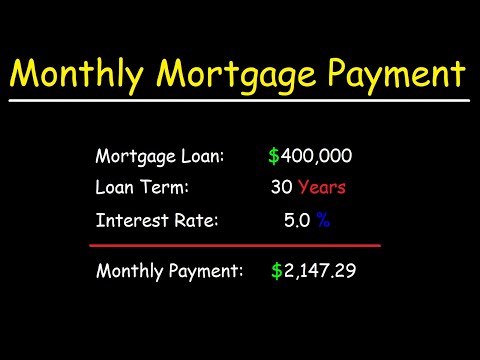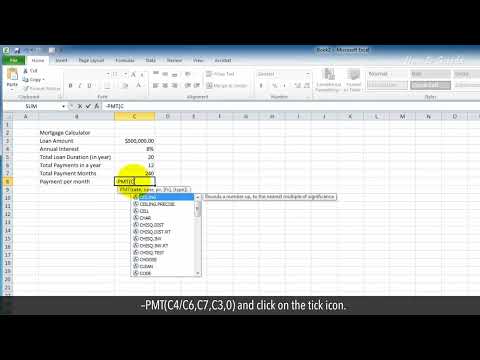Understanding The Importance Of A Home Loan Caculator In 2024
In 2024, understanding the financial ramifications of taking out a mortgage is more crucial than ever. A home loan calculator acts as a beacon in the often murky waters of mortgages, providing clarity and actionable insights. This tool essentially does the financial heavy lifting for you, breaking down potential monthly payments, interest rates, and the total loan cost with precision. Utilizing a reliable home loan calculator can help you make educated choices, alleviating some of the guesswork that typically accompanies the mortgage process. By translating what’s essentially financial jargon into everyday language, these calculators can be the guiding light you didn’t know you needed.

Top 7 Home Loan Calculators for 2024: Detailed Review

1. NerdWallet Home Loan Calculator
NerdWallet’s home loan calculator is renowned for its intuitive and user-friendly design. It shouts accuracy and simplicity, allowing users to input various loan parameters like home price, down payment, and interest rate. One of its standout features is the side-by-side comparison of different loan terms, providing a thorough look at how tweaking variables like interest rates or loan durations impacts your overall financial commitment.
Key Features:
– Side-by-side loan comparison
– Real-time interest rate updates
– Extensive library of educational resources
Innovative Insight:
NerdWallet uses real-time data from leading financial institutions, ensuring you get the most up-to-date rates. This makes it easier for you to decide the best time to lock in a rate.

2. Zillow Mortgage Calculator
Zillow, famous for its vast real estate database, brings the same level of detail and functionality to its mortgage calculator. What sets Zillow apart is its seamless integration with property listings. You can immediately factor in loan potentials on homes that catch your eye.
Key Features:
– Integration with Zillow property listings
– Filters for loan type and interest rate
– Graphical representation of monthly payments
Innovative Insight:
This calculator includes local property tax rates, PMI, and homeowner’s insurance in its calculations, offering a localized and realistic monthly payment estimate that reflects true costs.
3. Bankrate Mortgage Calculator
Bankrate provides a highly customizable home loan calculator, allowing users to input various components and see a precise breakdown of principal and interest, including fees and taxes.
Key Features:
– Customized amortization schedules
– Visualization of principal vs. interest over time
– Additional payment options to forecast early payoff
Innovative Insight:
Bankrate’s ‘compare scenarios’ tool lets you contrast different loan amounts, terms, and interest rates for a more rounded view of your lending options.
4. Quicken Loans Home Loan Calculator
Under the Rocket Mortgage umbrella, Quicken Loans offers a home loan calculator that leverages an AI-powered interface. Perfect for both seasoned borrowers and newcomers, this calculator is as advanced as it gets.
Key Features:
– AI-powered interface for personalized recommendations
– Real-time rate locking option
– Direct contact option with mortgage advisors
Innovative Insight:
The AI interface tailors suggestions based on your financial profile, credit score, and loan preferences, making the mortgage experience more personalized and less overwhelming.
5. Mortgage Calculator from Chase
Chase’s home loan calculator is notable for its simplicity and robust feature set. It provides a detailed cost breakdown and covers various loan types, such as fixed-rate and adjustable-rate mortgages.
Key Features:
– Comprehensive breakdown of different loan types
– Adjustable inputs for home insurance and property taxes
– Personalized rate quotes
Innovative Insight:
The transparency offered by Chase’s calculator includes an itemized list of additional costs such as closing fees, helping you prepare for the financial obligations ahead.
6. SmartAsset Mortgage Calculator
SmartAsset stands out for its holistic approach, integrating broad financial management tools with an in-depth home loan calculator. This tool incorporates not just loan parameters but your overall financial health.
Key Features:
– Integration with broader financial tools
– Detailed financial health analysis
– Personalized savings recommendations
Innovative Insight:
SmartAsset’s financial health analysis ensures your loan decisions align with your long-term financial goals, making it a top choice for those looking to plan for the future.
7. U.S. Bank Home Loan Calculator
Emphasizing a user-centric approach, the U.S. Bank home loan calculator delivers clear, concise results. It allows you to see various scenarios and understand how changes in down payment or interest rates will impact your monthly payments.
Key Features:
– Scenario analysis tool
– Clear, user-friendly interface
– Loan-specific FAQs and guidance
Innovative Insight:
The U.S. Bank calculator’s inclusion of a loan-specific FAQ section provides immediate answers to common questions, boosting user confidence in the mortgage process.

| Parameter | Details |
| Maximum Income to Mortgage Debt Ratio | 28% |
| Annual Combined Household Income | Minimum $120,000 for a $500,000 house |
| Conforming Loan for $250,000 Property | Requires 10% down payment and a 7% interest rate environment |
| Gross Monthly Income Requirement | Approximately $3,870 for a $250,000 home loan with a 50% debt ratio |
| Annual Salary Requirement | Around $46,450 for a $250,000 home loan |
| Estimated Monthly Payment for $500K Mortgage | $3,360.16 assuming a 30-year term and 7.1% interest rate |
| Monthly Payment Range for $500K Mortgage | Between $2,600 and $4,900 depending on term and interest rate |
| Monthly Payment for $300K Mortgage (6% APR, 15-year term) | $2,531.57 |
| Monthly Payment for $300K Mortgage (6% APR, 30-year term) | $1,798.65 |
| Feature | Description |
| Interest Rate Adjustments | Ability to estimate payments based on varying interest rates |
| Loan Term Options | Calculates monthly payments for both 15-year and 30-year loan terms |
| Down Payment Impact | Shows how different down payment percentages affect monthly payments |
| Debt-to-Income Ratio Analysis | Provides insights into suitable home price ranges based on current income and debt obligations |
| Affordability Assessments | Helps users determine if they meet income requirements for desired loan amounts |
| Benefit | Description |
| Financial Planning | Assists in budgeting and planning for future home purchases by estimating monthly payments and required incomes. |
| Scenario Comparison | Allows users to compare different loan scenarios, including various terms and interest rates. |
| Confidence in Purchase | Gives borrowers a clearer understanding of their borrowing capacity and financial commitment. |
| Quick Calculations | Provides instant estimates, saving time compared to manual calculations. |
| Informed Decisions | Empowers users to make more informed decisions by understanding the financial implications of different loans. |
Choosing the Right Home Loan Calculator: Our Final Thoughts
The right home loan calculator can be a game changer in your journey to securing a mortgage. Whether you value a cutting-edge AI interface, integration with real estate listings, or a comprehensive financial planning tool, the perfect calculator is out there. Understanding your specific needs and preferences will guide you in picking the most suitable one. As we move through 2024, leveraging insights from these calculators can significantly influence securing the best terms and remaining financially savvy.

Don’t hesitate to explore the calculators mentioned above and take advantage of the home loan calculator tool on Mortgage Rater to optimize your mortgage planning journey. Happy house hunting!
Fun Trivia and Interesting Facts About Home Loan Calculators
Unexpected Beginnings
Did you know home loan calculators aren’t just a modern invention? Their roots trace back to the early 20th century when banks needed a reliable way to standardize loan calculations. This tool has evolved significantly, providing homebuyers the ability to get accurate insights into their mortgages. Surprisingly, the first home loan calculators were mechanical devices that had levers and gears for making complex calculations! Today, they’re mostly digital, providing quick and accurate Results from the comfort of your home.
Emotions and Finances
Navigating the journey of securing a mortgage can be an emotional rollercoaster. It’s fascinating how something as seemingly dry as numbers can stir deep emotions. Interestingly, it’s not unusual To cry even years after dealing with the stress of securing a home loan. This tool aims to alleviate some of that stress by giving you a clear picture of your financial commitments.
Fascinating Functions
Home loan calculators do more than just crunch numbers. They help you better understand amortization schedules, which break down each payment into interest and principal, giving insights into how quickly you build equity. Plus, they can even factor in additional costs like property taxes and insurance. Curious about what each of these terms means and how they affect your loan? Don’t worry, many calculators have integrated help sections to guide you through!
Real-Life Applications
In practical scenarios, home loan calculators have saved countless people from financial strain. For example, using a home loan calculator can help visualize how different interest rates and loan terms affect your monthly payment, helping you make more informed decisions. In some ways, it might save you from making costly mistakes akin to the consequences of a sudden, unexpected shooting incident in Maine. It’s a tool that’s increasingly valuable in today’s unpredictable economic landscape.

How much is a mortgage on a $500,000 house?
For a $500,000 house, assuming a 30-year loan term and an interest rate of 7.1%, your estimated monthly mortgage payment would be $3,360.16. However, the payment can vary between $2,600 and $4,900 depending on the specific terms and interest rate of your loan.
How much house can I afford for $5000 a month?
If you’re aiming for a monthly mortgage payment of $5,000, you could potentially afford a house around $700,000 to $800,000, depending on your interest rate, loan term, down payment, and other financial factors.
How much is a 300k mortgage per month?
With a mortgage of $300,000 at a 6% APR, your monthly payments would be about $2,531.57 for a 15-year loan and approximately $1,798.65 for a 30-year loan, not accounting for escrow.
What is the monthly payment on a $400,000 mortgage?
On a $400,000 mortgage, if we’re assuming a 30-year term and an interest rate of around 7%, your monthly payment would be in the ballpark of $2,600. But specific figures can vary based on your loan terms and interest rate.
How much income do you need for a 350k house?
To afford a $350,000 house with typical lending standards, you’ll generally need a combined household income of at least $84,000 per year, assuming a monthly mortgage payment that fits within lender affordability guidelines.
What credit score do you need to buy a $500,000 house?
For a $500,000 house, you generally need a good credit score, around 740 or higher, to qualify for better interest rates, though requirements can vary by lender.
How much house can I afford if I make $36,000 a year?
On a yearly salary of $36,000, you could reasonably afford a house priced around $144,000, considering the 28% income rule for mortgage payments, keeping payments under $840 per month.
Can I afford a 250k house on 50K salary?
With a $50,000 salary, you can typically afford a house around $200,000, utilizing the 28% income rule for determining mortgage affordability, equating to a mortgage payment of about $1,167 per month.
Can I afford a 300k house on a 60k salary?
With a $60,000 salary, affordability guidelines suggest you could purchase a house priced around $240,000. This keeps your mortgage payment within approximately 28% of your monthly income, about $1,400 per month.
Can I afford a 300K house on a 70K salary?
On a salary of $70,000 per year, you could afford a house priced around $280,000, keeping your monthly mortgage payment under $1,633, adhering to the 28% income rule.
What is the 36 rule?
The “36 rule” refers to a common rule of thumb that suggests your total debt payments should not exceed 36% of your gross monthly income. This includes mortgage payments, property taxes, insurance, and any other debts like car loans and credit cards.
What credit score is needed to buy a $300K house?
To buy a $300,000 house, you’ll typically need a credit score of at least 620 for a conventional loan, but a higher score, around 740 or above, is ideal for securing the best interest rates.
What should your income be for a $400000 house?
For a $400,000 house, your income should be around $96,000 per year, enabling you to comfortably handle a monthly mortgage payment that falls within the 28% income guideline.
What is the 20% down payment on a $400 000 house?
A 20% down payment on a $400,000 house would be $80,000. Putting down this amount can help you avoid private mortgage insurance and secure better loan terms.
How much is a 500k mortgage per month?
A $500,000 mortgage, again assuming a 30-year term and interest rate of 7.1%, would have an estimated monthly payment of $3,360.16. Payment amounts can vary widely depending on different loan terms and interest rates.



